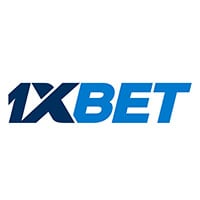The coronavirus outbreak has seen all major sports leagues indefinitely suspended, including the English Premier League, while the European Championships and Olympics have been postponed to next year, which will cause a major hit to operators’ 2020 revenue.
That opens the door to offer other verticals to fill the void. Whether it’s online poker, casino or esports, there are plenty of other verticals to keep players interested. However, perhaps none more so than virtual sports.
The virtual sports betting product started becoming popular at the start of the last decade, as consumers became more obsessed with immediacy. Players only have to wait between 90 seconds and three minutes in most instances to have the result of their bet come through, and don’t necessarily need knowledge on the sport to play.
Even before the current spike, there had been an increased rise in virtual betting. In Italy, the share of virtual betting doubled from 1.9% in 2017 to 3.8% in 2019. The CEO of virtual sports supplier Golden Race Martin Wachter told Gambling Insider last year, long before the coronavirus outbreak, that virtual sports have the enormous potential to exceed sports betting revenue. In fact, 79% of Golden Race’s Gross Gaming Revenue (GGR) for 2019 came from virtual football.
A factor that goes in virtual sports’ favour is that players are already familiar with the product considering it’s the vertical that replicates sports betting the most; all of your favourite sports, just in virtual form. That puts it in great stead when it comes to filling the sports betting void, ahead of the likes of esports, which is a new discipline to many operators.
And the evidence of an increased popularity in virtual sports is there to see at this early stage. According to research from Optimove, using Italy’s lockdown on 9 March as the threshold, compared to the previous month, virtual sports betting increased 30% among 10 leading European operators.
Speaking at April’s Betting in the Face of COVID-19 virtual conference, Wachter reinforced the notion that virtual sports is the vertical to fill the void. He stated that Golden Race has had more than 100 operators sign up with them, which should cross 200 during this period.
It’s not hard to see why. Virtuals sports has proven itself to be a profitable business due to consistent margins and low operating costs, which are likely to continue when sports betting returns, as players become more familiar with virtual sports.
The sentiment that virtual sports is a vertical that operators and suppliers should invest more in is seconded by the co-CEO of NSoft. The Bosnia and Herzegovina-based supplier focuses on numerous verticals, but one of its specialties is the creation of virtual games for both retail and online. Despite this, their annual virtual sports turnover growth is 20%. But even before the coronavirus pandemic, Dario Jurcic noted that the supplier needed to invest more in virtual sports with the current predicament surely only reinforcing that fact.
During ICE London in February, NSoft introduced Virtual Penalty Shootout and Virtual Drag Races to go alongside their existing virtual sports offering. And just to prove how much they believe in the virtual sports vertical, they offered its virtual games for free to its partners during April and May.
“There was a clear signal, even before the pandemic, that we need to invest more in virtual sports,” says Jurcic. “Our two new games will allow us to target more specific audiences and assure even higher year-on-year growth.
“Virtual sports will be very beneficial for operators during the pandemic. Companies that do no introduce virtual sports and virtual games, in general, will suffer an even higher decline of business.
“We have been closely monitoring this case for our current customer portfolio, and there’s a significant advantage for customers that recognised this and introduced virtual sports early on.”
However, while Jurcic is adamant during this time those who don’t offer virtual sports will suffer, he didn’t see the vertical being the main one to replace the financial hole left by sports betting.
“I would say that casino and live casino will still hold an edge over virtual sports,” Jurcic added, “but the current situation will surely help promote virtual sports and create a new player base that wouldn't happen otherwise.
“The vertical will grow much faster than anticipated. But let’s not forget eSports growing at a tremendous pace as well, so I wouldn’t rule out live sports betting just yet.”
Despite this, Jurcic admitted there are a couple of reasons why virtual sports can stand out as the main vertical to replace sports betting, due to the fast paced-nature of it and it’s natural comparison considering it’s a virtual take on real sports. But where the offering stands out the most compared to the real thing is it’s available 24/7, a factor even live sports betting can’t replicate. Just like the Jurcic acknowledged, the rise in business with operators looks to replace live sports betting with virtuals, with football as the main product.
“Football is definitely the king of virtual sports,” Jurcic emphasized. “The demand for virtual sports nowadays is astonishing. We have been contacted by so many companies in the industry that are willing to introduce our products, and this is a clear sign that the business is and will continue to grow. The player demand is there, and that’s always the best driver. However, companies that introduced virtual sports before the pandemic will benefit more as they have built a stable player base by now. The ones that just introduced them will see slower growth but still will benefit a lot. Now is the time to convert traditional sports betting fans to virtual sports.”
While Jurcic made the point that companies who already had a virtual sports product to offer would reap the benefits more, there’s plenty of operators and suppliers jumping on the virtual sports bandwagon.
That applies to sports betting solutions provider ExeFeed, who released its virtual product Simulated Reality Football in April, with its main purpose for operators to help fill the void of sports betting.
The Serbian provider usually specialises in odds calculations and live odds feeds, but saw this period as the chance to capitalise with their Simulated Reality Football. The product will reflect team form and normal match play, with all remaining fixtures scheduled to be played as per their original date and kick-off time. ExeFeed will also offer pre-match odds, live BetBuilder and cashout features to complement the virtual football offering, clearly designed to replicate betting on live sport.
“It is impossible for virtual sports to replace real matches, but we think this kind of real match simulation can create the content that is between sports betting and virtual sports to create a new sports betting space,” explains ExeFeed senior partner and product manager Marco Josipovic. “For operators, content is now most important and this will certainly help to overcome this crisis. We quickly realised the entire industry will be in crisis and that online casinos, poker, and so on were not enough for operators who have sport betting at the core of their business.”
As mentioned before, the longer major sport is put on hold, the more familiar consumers will become with virtual sports, which can only add to the continued popularity of the vertical once – hopefully sooner rather than later – things start getting back to some semblance of normality. In terms of attracting a new audience, once given a taste, fans are still likely to keep on engaging with virtual sports, even when live sports returns, a point Josipovic agreed with.
“It is certain virtual sports will be popular right now, and I think the popularity will grow as this crisis situation continues,” Josipovic said. “We received positive feedback from clients we work with and everyone was eagerly anticipating live virtual events, we expect to attract a lot of new clients. This opens the door to our company.”
In terms of virtual sports being the main vertical to replace sports betting, a case in point is popularity of the Virtual Grand National. The annual UK race was aired on ITV on 4 April, replacing the actual race that was cancelled because of the coronavirus outbreak. The race raised £2.6m ($3.2m) for NHS Charities Together, while reaching a peak viewership of 4.8m, the equivalent of 30% of the national television audience. While this figure was half of the viewers for the real race in 2019, it was a monumental rise from the 737,000 that tuned into 2019’s virtual race. This further connotes the fact that while virtual sports might not be able take over from real sport just yet, it’s certainly a more than adequate temporary replacement, according to the COO of the company behind’s the race’s animation.
“In addition to the extensive viewership, information about Inspired’s Virtual Grand National was trending second worldwide on Twitter for a period of time,” said Brooks Pierce, Inspired Entertainment’s president and COO. “This is a great example of how virtual sports can plug the gap and bring people together.”
Inspired Entertainment provided the animation for the Virtual Grand National, with the supplier having a portfolio stretching 14 different sports, which are available 24/7 and available in 30 countries. Virtual sports is a speciality of Inspired, who too will use this current climate as an opportunity to further grow their virtual sports offering, with business showing a significant boost since the suspension of live sports.
Brooks added: “Virtual sports can fill the void of live sports with ultra-realistic content and with attractive betting options that sports wagering fans are used to and can easily adopt.
“It will also be a core offering when live sports are back, as players like the quick action offered by virtual sports with a contest going off every few minutes.
“Our virtual sports business has seen significant growth in the last month, and so have our online and mobile slot games. The appetite for our virtual sports has been strong in Europe for years and the quality and instant gratification our products offer are proven. Content for each of our virtual sports mimics the real-life rules of gameplay and betting options for that particular sport.”
The growth in Inspired’s virtual sports offering is backed by it’s 2019 Q4 results, which according to the supplier, was the verticals strongest ever quarter, contributing to a revenue increase of 116% from 2018, to $66.3m.
The point about virtual sports continuing to grow once live sports does return is also backed by the general manager of gaming at Sportradar, Frank Wenzig. Speaking to Gambling Insider in a recent GI Friday roundtable discussion on virtual sports, he said that virtual sports can enhance engagement with consumers. The fact fans are now seeking new ways to engage with their favourite sports, added with the use of new technology, means virtual sports can be a credible alternative to real sports betting for the long-term.
And from what the various contributors have said, the current period can be used as an opportunity for virtual sports to establish itself, and it will only continue to grow once live sports and sports betting returns. That can put the vertical in a great position to become essential to operators. Make no mistake about it, virtual sports is here to stay.


































